#Cervus canadensis
Text

A wapiti bull (Cervus canadensis) grazes in Grand Canyon National Park, Arizona, USA
by jaffles
#wapiti#elk#american elk#deer#cervus canadensis#cervus#cervidae#artiodactyla#mammalia#chordata#wildlife: arizona#wildlife: usa
878 notes
·
View notes
Text

Cow and Calf Elk | Olaus Murie (1889-1963)
#olaus murie#vintage art#animals#wild animals#animals in art#mammals#wildlife biology#zoology#elk art#elk#cervus canadensis
120 notes
·
View notes
Text

Young bull elk (Cervus canadensis) with an atypical antler covering his left eye. [x]
#elk#wapiti#deer#Cervus canadensis#ungulate#mammal#physical differences#I am not sure if this needs a tw of any kind let me know
810 notes
·
View notes
Text

Bull Elk (Cervus canadensis) looking for a mate, Yellowstone National Park, Wyoming, USA. October.
Photographer: George Sanker
#george sanker#photographer#bull elk#elk#animal#mammal#wildlife#cervus canadensis#yellowstone national park#wyoming#united states#nature
48 notes
·
View notes
Photo

Elk (Cervus canadensis) bull at Yellowstone National Park in Wyoming, U.S.
Loren Mooney
201 notes
·
View notes
Photo

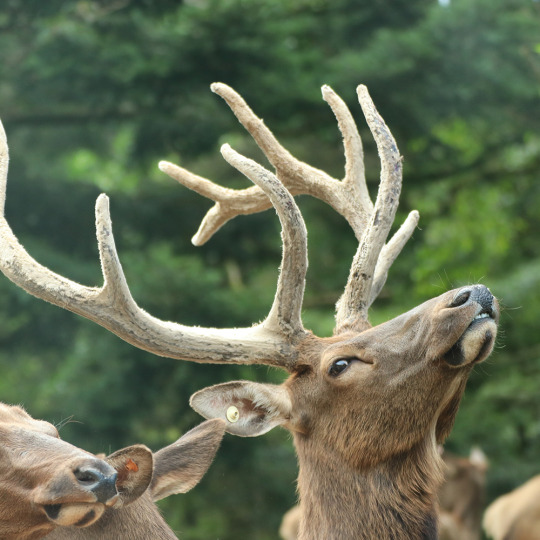
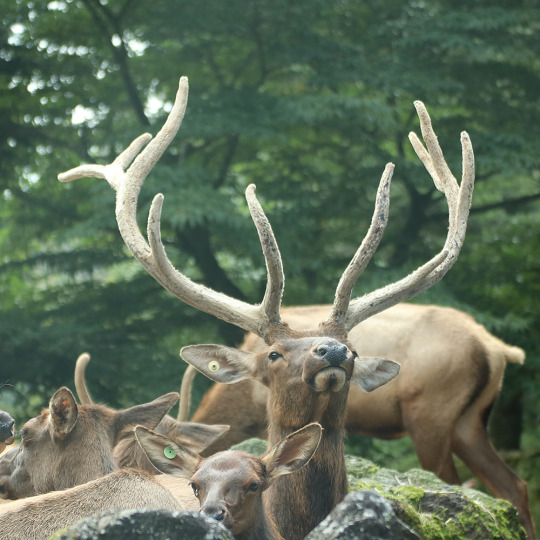
王?
@富士サファリパーク
32 notes
·
View notes
Photo
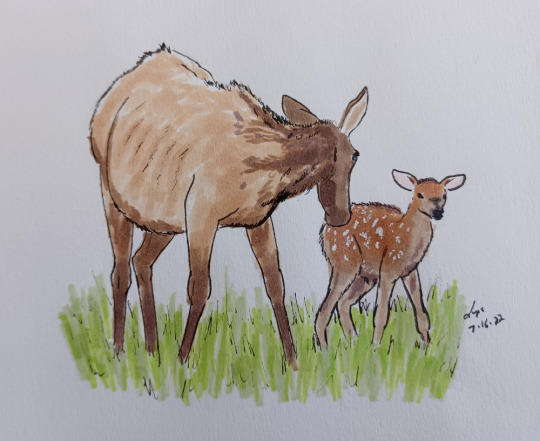
I chose the elk (Cervus canadensis) for today's Zooly prompt. I specifically chose a cow elk because the males of both this species and others often get all the attention because of their antlers. There's even a tendency to portray female animals in submissive, less active poses in taxidermy and other forms of art, with the males being the main focus of the piece. So I decided to buck the system (pun intended) and leave the bulls out of it.
Ink pen and Copic markers.
#elk#deer#wapiti#cervus canadensis#wildlife#Zooly#Zooly Art Challenge#animals#wild animals#cervine#ungulates#megafauna#North American megafauna#nature
20 notes
·
View notes
Text







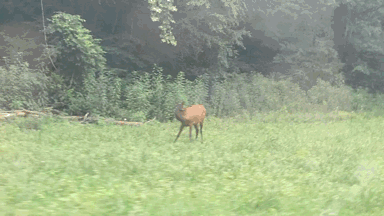
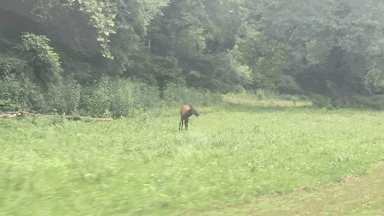

We saw an elk calf!
Please visit my terms of use (https://homebrewstims.tumblr.com/tou) BEFORE you reupload! ^^
#animals#brown#calf#Cervus canadensis#deer#ears#elk#forest#gif#grass#grazing#green#mountains#nature#scenery#stim#stimblr#stimmy#tan#Yellowstone#content: original footage#creature: equine/ungulate#creature: plant/fungus
8 notes
·
View notes
Text
Bufflehead, american wigeon, solitary sandpiper, wapiti
#tringa solitaria#bucephala albeola#anas americana#cervus canadensis#nature#aminals#cervidae#birds#ornithology#twitcher#ducks#text#personal
0 notes
Text
Regarding my last two reblogs: go and watch the short video clips with sound on. It’s remarkable how DIFFERENT the bulls of the two deer species — elk and red deer — are from one another. Antlers, pelage, and — most strikingly in this case — rutting call. Elk bugle, while red deer roar. As a kid growing up, most animal books I had treated them together as one species Cervus elaphus (this was generally the fashion among scientists until the 1990s, and later for some) so I was always baffled by references to “roaring stags” I’d occasionally come across in literature. “Roaring” was not at all the word I would use for the high-pitched, eerie, modulated whistling of bull elk that I had heard on countless nature shows and had only ever heard referred to as “bugling” or occasionally “whistling.” It wasn’t until much later that I actually heard the call of a rutting red deer and realized how appropriate the “roaring” descriptor was. I had been misled by the (inappropriate) taxonomic lumping of these very different deer into assuming Europe’s red deer must be similar in behavior to America’s elk. As it turns out, the great differences in the rutting calls of the red deer and the elk were important characteristics in supporting their status as separate species; things like rutting calls fall into what deer scholar Valerius Geist refers to in his writing as “nuptial characters” and since they are linked to reproduction, they are also linked, inevitably, to speciation.
0 notes
Text

A bull wapiti (Cervus canadensis) in Yellowstone National Park, USA
by Stormpeak_1
#wapiti#elk#deer#cervus canadensis#cervus#cervidae#artiodactyla#mammalia#chordata#wildlife: usa#wildlife: north america
74 notes
·
View notes
Text

The Wapiti Deer (Cervus canadensis) | Joseph Wolf | Zoological sketches v.1 (1861) | Biodiversity Heritage Library | Flickr | Public domain
4 notes
·
View notes
Text

American elk Cervus canadensis canadensis
Observed by adamfromcanada, CC BY-NC
151 notes
·
View notes
Text
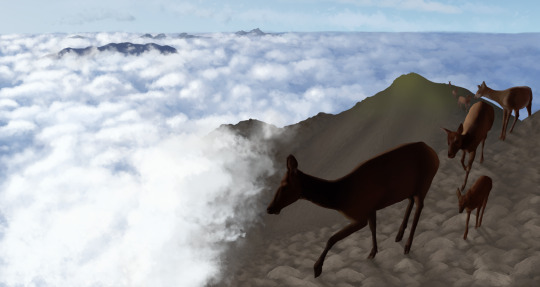
Deercember Day Twenty-Six: Rocky Mountain Elk | Wander
The elk (Cervus canadensis), or wapiti, is the second largest species of deer, and one of the largest terrestrial mammals in its native range of North America and Asia. The word "elk" originally referred to the European variety of the moose, Alces alces, but was transferred to Cervus canadensis by North American colonists. The name "wapiti" derives from a Shawnee and Cree word meaning "white rump" for the distinctive light fur on the animal's rear. The Rocky Mountain elk (Cervus canadensis nelsoni) is a subspecies found in the Rocky Mountains and adjacent ranges of Western North America. It is this subspecies that is found throughout Yellowstone National Park, though many of the animals present are transitory and follow annual migration routes to and from their summer and winter ranges; there are currently between seven and eight herds who intermittently call Yellowstone home, numbering around 30,000 animals total in the summer. The Cody elk herd migrates across rugged country on the eastern side of the Absaroka Mountains near Cody, WY. This large herd of 6,000 - 7,000 animals winters in foothill habitat to the south and west of Cody. There are three core winter areas, with each having a different route back to Yellowstone. In spring, the elk begin their migration, though the elk that winter in the upper Greybull River have perhaps the most arduous journey. From winter range, they climb around 900 meters (nearly 3,000 vertical feet), up and over Needle Mountain, before descending down to the Shoshone River, only to climb again out of the river up to the Thorofare for summer. Some animals in this herd make migrations as far as 188 km (117 mi), while others make shorter migrations; the mean migration length is 93 km (58 mi). More information here and here about the Cody Herd, here about Yellowstone National Park, here about Rocky Mountain elk, and here about elk as a species.
Reference: Deer and Background. (The documentary is great, too!)
#what is sleep#for real though I've been excited about this prompt ever since I saw it and thought of this documentary#elk migration is so perfect for 'wander' to me#finally got to have as many happy little clouds as my heart wanted too#I deeply struggled with those rocks until I settled on just using a brush and I'm glad I did#I've been painting a lot as of late but painting rocks by hand is a bit much for one session for me#I really enjoy this one#I think I've come so far at my backgrounds since day one#I guess I've wandered too.#Deercember#realHum#Art#Drawing#deer#deer art#Rocky Mountain elk#Rocky Mountain wapiti#elk#wapiti#Cervus canadensis nelsoni#Cervus canadensis
2 notes
·
View notes
Note
holy shit a deer
Bonus_Ask(elk)
[ With ten asks fulfilled, the magic anon is over! Esmé is now back to normal. They were quite concerned regarding the last incident with an electric razor, but their face plate appears undamaged upon further inspection. ]
[ She turns her head to the anon, confused and still covered in Christmas lights. ]
I WAS AN [Cervus canadensis.] WHAT ARE YOU, DAFT?
#mentally xyz mercs#mentally joyful demobot#rp blog#input()#m!a == elk#ooc: i had to save this one for last#gave me a good chuckle#id: Cervus canadensis is a north american elk
2 notes
·
View notes
Text

Elk aka Waipiti (Cervus canadensis), male, family Cervidae, western USA
photograph by David Turko
779 notes
·
View notes